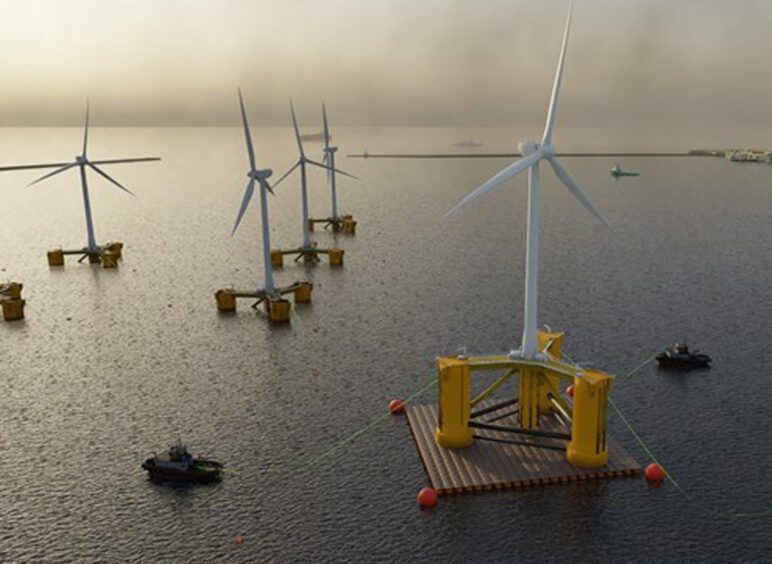
EMEC (the European Marine Energy Centre) has unveiled designs for a new floating offshore wind test site off Orkney.
The 100 megawatt test and demonstration site will lie 12 miles west of Orkney, sitting further out to sea from the existing EMEC Billia Croo wave energy facility.
It comes as projects start getting ramped up for ScotWind, the huge seabed auction whose awards were unveiled earlier this year, and concerns about a lack of UK manufacturing being utilised.
The floating wind test centre will allow “commercial scale up and build-out” of technologies as they are de-risked, said EMEC, and “capture and retain economic benefit” in Orkney and the Highlands and Islands as a catalyst for R&D.
Catalyst for commercialisation
EMEC is proposing a site with six berths for floating offshore wind turbines, up to 20MW rates capacity.
With water depths of 80-95 metres, large waves and a wind speed of 10.7 metres per second, EMEC said the site will offer “representative” conditions to locations where projects are planned around Scotland and the Celtic Sea.
EMEC managing director Neil Kermode said Scotland “need(s) to be testing these technologies and developing our supply chains now” to be ready for ScotWind.
“Floating wind is still in relative infancy with limited experience globally of deploying and operating technologies in high energy conditions.
“EMEC’s new demonstration site will provide developers with a highly comparable testing ground to proposed project locations prior to large-scale roll out.
“This testing will enable companies to de-risk projects helping to satisfy technical due diligence requirements and make financing easier and cheaper.
Dovetail existing and future needs
Following extensive research and engagement with industry, the site setup “has been fine-tuned” to dovetail the sector’s existing and future requirements, with more than 25 GW of floating wind due to be deployed in UK waters over the next 20 years.
It has been designed for floating wind developers to de-risk their technologies, putting turbines, floating structures, moorings and other components to the test in an energetic offshore environment. This will enable performance to be refined on a wide range of floating wind technologies prior to commercial scale-up and build-out.
It comes after a report issued by the Net Zero Technology Centre (NZTC) said development of test and demo sites will be key in ensuring Scotland and the wider UK can seize the economic benefits of floating wind.
EMEC has not given a timescale for when the facility will be operational, or the cost required.
The firm is a non-profit, with backing of around £39 million of public funding via the Scottish Government, Highlands and Islands Enterprise, The Carbon Trust, UK Government, Scottish Enterprise, the European Union and Orkney Islands Council.
Xodus
Xodus Group (Xodus) has provided support through the initial design phases and both parties are working to establish a longer-term collaboration through the X-Academy initiative to ensure it ensuring that the facility plays a key role in developing the skills needed to grow the sector.
X-Academy managing director Peter Tipler said: “EMEC’s ambition to create a floating wind test site has been a great innovation project for Xodus to support and will be key to de-risking the sector for decades to come.
“There’s a huge opportunity here for Orkney to capitalise on the ScotWind developments and become a base for supply chain and assembly.”

